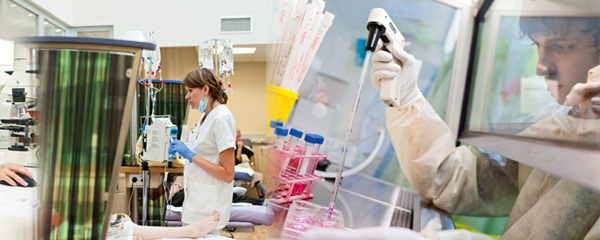Medical dictionary – Masson
- a substance fixed to a molecule or cell that can be identified in small quantities (radioactive, fluorescent substances, etc.) and used for functional investigations. The term tracer is also used;
- a substance indicating a specific disease.
Cancer markers
Substances present abnormally or in excessive rates in the serum, indicating cancer.
Genetic and molecular markers
A DNA sequence, variable according to the individual, whose localisation is perfectly known.
This DNA sequence can be identified specifically. Markers are used in genetic mapping to "signpost" the genome.

